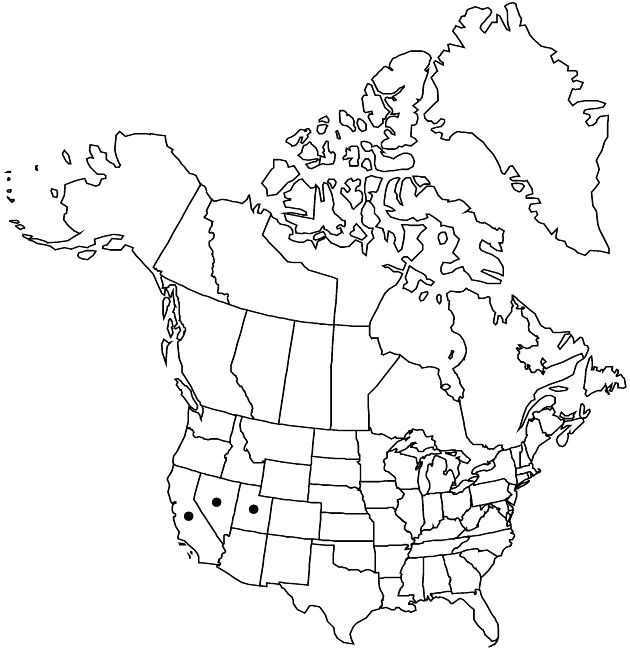Erigeron clokeyi var. pinzliae
Sida 21: 28. 2004.
Revision as of 22:02, 29 July 2020 by imported>Volume Importer
Leaves uniformly hispidulous to hirsutulous (hairs spreading to spreading-arching, stiff). Cypselae 1.8–2 mm. 2n = 18.
Phenology: Flowering Jun–Sep.
Habitat: Dry, rocky habitats, dry meadows, sometimes with sagebrush or mountain mahogany, common in treeless areas, often with yellow, bristlecone, or limber pine
Elevation: 2200–3500 m
Distribution

Calif., Nev., Utah.
Discussion
Variety pinzliae is found in California, central Nevada, and west-central Utah. It apparently is discontinuously different from var. clokeyi and might be better treated at specific rank. Its relationship to Erigeron pygmaeus should be studied in such a consideration.
Selected References
None.
Lower Taxa
None.
... more about "Erigeron clokeyi var. pinzliae"
introrse +
connate +
distinct +
herbaceous +
scarious +
hirsute +
papillate +
continuous +
1-3-nerved +
oblanceolate +
decurrent +
1-nerved +
linear;lanceolate oblanceolate or spatulate +
ribbed +
stigmatic +
barbellate +
persistent +
20;27 +
absent +
branched +
reduced +
absent +
2-nerved +
dimorphic +
1.8mm;2mm +
absent +
staminate +
straight +
eglandular +
distinct +
proximal +
1;5 +
bisexual +
dispersed +
Dry, rocky habitats, dry meadows, sometimes with sagebrush or mountain mahogany, common in treeless areas, often with yellow, bristlecone, or limber pine +
indeterminate +
surrounding +
turbinate;hemispheric +
reflexing +
alternate +
erect;spreading +
deltate +
2-carpellate +
inferior +
attached +
anatropous +
tough +
thick +
pistillate +
absent +
connate +
persistent +
distinct +
falling +
hirsute +
unequal +
equal +
Sida +
2004 +
pistillate +
absent +
fertile +
epaleate +
pitted +
flat;conic +
fibrous +
exalbuminous +
modifed +
2;3 +
stramineous +
persistent +
connate +
falling +
inconspicuous +
fine +
Endemic +
alternate +
deltate +
2-branched +
glabrous +
Erigeron clokeyi var. pinzliae +
Erigeron clokeyi +
variety +
indurate +
shorter +
taprooted +
perennial +